-
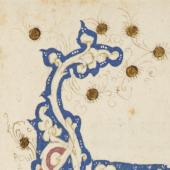
Livy Historia Romanae decades (Rome, 1476)
-

Biblia latina (Venice, 1478)
-
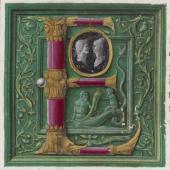
Gaius Plinius Secundus (23–79) Naturalis historia
-

Antonio Gazio (1449–1528) Corona florida medicinae
-
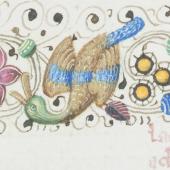
Lactantius (c. 240–c. 320) Opera (1465)
-
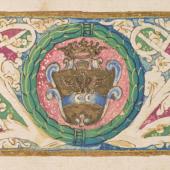
Lactantius (c. 240–c. 320) Opera (1468)
-
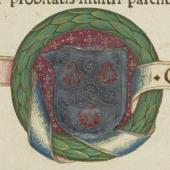
Francisco Filelfo (1398–1481) Orationes diversae et alia Latin and Italian
-
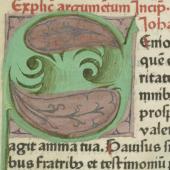
Biblia latina (Fust and Schoeffer)
-
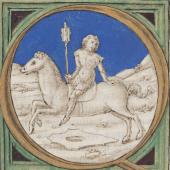
Sabellico (1436–1506) Decades rerum Venetarum
-
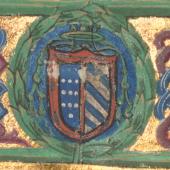
Historia Baetica and Fernandus Servatus
-
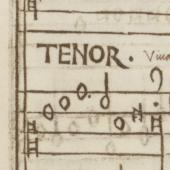
Printed music in the Historia Baetica
'A beautiful illumination, as antient at least as the book itself’
Private lives of print
The invention of the printing press coincided with the apex of commercial manuscript production. To compete with the thriving manuscript market printers were required to create products which met the expectations of patrons accustomed to having their books tailored to their taste and pocket. Consequently, many early printed books were decorated by hand in the same style, and often by the same artists, as their manuscript counterparts. Richly gilded and highly coloured initials and borders were added by hand into spaces deliberately left blank by printers.
Some early books were decorated in the print workshop, with different copies sharing characteristic decorative features. The majority of books, however, were rubricated and decorated individually, some close to the place of printing, others in distant towns and countries. Some were decorated by booksellers to increase their saleability, others in-house at religious institutions or as bespoke commissions from favoured artists for private owners.